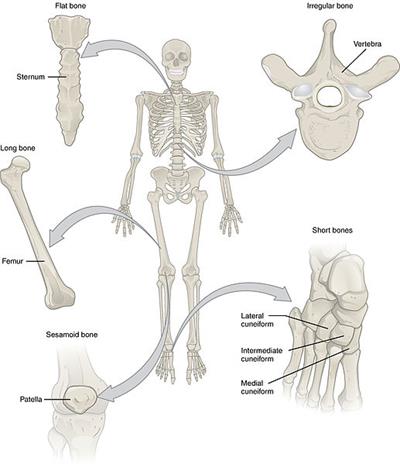PDF chapter test TRY NOW
Introduction
The system that provides the hard structure or framework to the human body for support and protection is known as the skeletal system.
The movement of the animals or the human body occurs in a variety of ways. Certain body parts can be moved in various directions, and some features can be moved only in one direction. All these movements and their variations are because of the bones that are attached by joints. The bones and the muscles help in movements such as walking, running, chewing, etc.
Types of skeleton
The structural framework of bones linked together by joints is known as the skeleton.
Based on the presence in the body, skeleton is of two types. They are:
- Exoskeleton
- Endoskeleton
1. Exoskeleton:
The skeleton found on the exterior layer of the body is the exoskeleton.
Example:
Scales in the fishes, the hard body covering of insects, the hard outer layer of the tortoise and the feathers of the birds are some of the examples.
2. Endoskeleton:
It is the skeleton found inside the human body.
It is mesodermal in origin and is found almost in all vertebrates. It is responsible for the formation of the main body structure.
Functions of skeleton
The five important functions of the skeletal system in the human body are:
- It is the system that provides shape and structure to the body.
- The internal organs of the body are supported and surrounded by this system.
- Calcium and phosphorous are two minerals that the body requires for important regulatory
functions. These minerals are stored inside the bones of the skeletal system. - The red blood cells, the important component of blood, are produced inside the bone marrow.
- The skeletal system also plays a major role in muscular movements. The bones act as levers for muscular action. The movement of muscles would not be possible without tendons and ligaments.
Constituents of skeleton
The human skeleton comprises bone, cartilages, and ligaments. Bones are the structures that form the hard framework of the body. The cartilages are the supporting and connecting structures. It can be found in the external ears and at the tip of the nose. The bones are bound together by the ligaments.
The human skeletal system comprises different types of bones. They are as follows:

Types of bones
1. Long bones:
These are the bones found in the arms and legs.
2. Short bones:
These bones are found in the wrist, ankle, and vertebral column.
3. Flat bones:
These are the bones of the skull, ribs, shoulder, and hips.
4. Irregular bones:
These are the bones of the spine and vertebral column, mandible, palatine, inferior nasal concha, and hyoid.
Reference:
https://www.istockphoto.com/vector/types-of-bones-vector-illustration-labeled-anatomical-skeleton-set-scheme-gm1165069255-320442343
